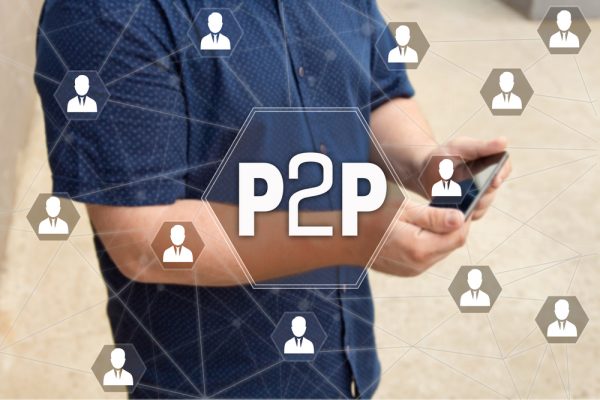
Everything You Need To Know About Peer-to-Peer Lending
Not too long ago, if you needed a loan, your only real option was to go to a bank or another similar financial institution. But in today’s world, you can get money from other places. One of them is a peer-to-peer loan, also called a P2P loan.
In this type of loan, people lend money to each other through a website that acts as a middleman. P2P lending, which is also called social lending, crowd lending, and even crowdfunding, gives investors another way to make money back on their investments.
Peer-to-peer loans started in the UK around 2005. Since then, they have given out billions of pounds worth of money to people and businesses in the country. Even though the market has been around for a while, many people still think of it as a less common option than traditional lenders.
How does P2P work?
Peer-to-peer lending is made possible by websites that connect borrowers and lenders. You may borrow money from one of the many P2P sites in the UK or use a peer-to-peer loan comparison website to discover the best price.
Your loan request will be looked at the same way it would be at a regular bank. The peer-to-peer loan platform will use a credit reference bureau to look through information that is available to the public, such as the electoral register.
It will also look at your financial history to figure out your credit rating, which shows how risky it is to lend you money. If your loan request is accepted, the system will try to match you with other borrowers who are willing to give you a peer-to-peer loan.
If you want to invest or become a lender, you can set up an account on the website for peer-to-peer lending. Afterwards, put the money you want to use for investing into that account.
You might be able to choose the rate of return you want to get and spread your money out among several borrowers, making it less likely that a loan won’t be paid back. On some websites, you can even bid on loans that are up for grabs.
But because each platform works in a different way and gives investors different levels of security, it is important to do enough research to find the one that best fits your needs.
In general, investors can expect a lower rate of return when they think an investment is safer.
Advantages for the borrower
- If you have good credit, peer-to-peer lending platforms may be able to offer you better interest rates than traditional banks.
- Peer-to-peer loans could be available to people with bad credit through some websites.
- If you decide you don’t need the money from your peer-to-peer loan anymore, you can cancel it early or pay more than you owe without being charged.
- The process is usually quick and easy because it takes place online.
- You can borrow money for a lot of different reasons, like if you need money for your business.
Advantages for the lender
- There is a chance that you could get a rate of return that is much higher than what you can get from other assets, like bank accounts or bonds.
- Depending on who you lend money to, you can choose how much risk you want to take.
- Some websites protect investors by giving them money for emergencies if borrowers don’t pay back their loans.
Disadvantages for the lender
- The Financial Services Compensation Scheme does not cover any loans you give to other people. If the borrower can’t repay the loan, you’ll lose money.
- If you want your money back while you are still paying back the pound 10000 money loan in the UK, you will probably have to find another lender who is willing to take on the loan. Most of the time, the platform can take care of this for you, though the process might not always go as fast as you’d like. There’s also the chance of being charged.
- If the borrower pays back a peer-to-peer loan earlier than planned, the lender may not get as much money as they thought they would.
Disadvantages for the borrower
- You may pay more than the loan’s interest rate.
- Without strong credit, you may pay a higher borrowing rate than with regular lenders.
- If your finances don’t look good, you might not even be able to get a peer-to-peer loan.
- If you have trouble paying back the loan, you might not have the same level of protection as if you had borrowed money from a debt consolidation cash loan from a direct lender.
Alternatives to P2P Lending
If you want to borrow money, you can go to a traditional lender like a bank, building society, credit union, or in some cases, even your employer. If you are having trouble getting a loan from a bank, you could ask a friend or family member to act as a guarantor for you. This means that if you can’t pay back the debt, it will be their job to do so on your behalf.
Conclusion
From what’s been said so far, it’s clear that peer-to-peer lending platforms are a good way to get loans. Plus, you can get loans on average interest rates. Another great way for people who want to make more money from their assets is to do so.
It is possible to say that there is no business on the market that doesn’t come with some kind of risk. As we move forward with the right business plans, we can earn a higher rate of interest while taking on less risk. However, this claim can only be made after taking into account the risks that come with the different types of platforms.
In contrast to how things work in banks, this platform gives lenders, who are seen as very important, full access to all information. So, people who are thinking about starting or setting up a non-banking financial organization will find that online peer-to-peer lending is the best option.

Ailsa Adam is the Editor-in-Chief and former content head at Hugeloanlender. She has been a valuable member of the content strategy team since 2017 due to her abundant experience in the finance sector. Passionate about helping individuals navigate the world of loans and personal finance, she has dedicated herself to acquiring extensive knowledge on various financial products. Before her role at Hugeloanlender,
Ailsa worked as a seasoned journalist and writer, specialising in creating informative blogs and articles on diverse loan types. She is known for her meticulous research and commitment to delivering accurate and engaging content. She holds a degree in MBA Finance and has a keen interest in creative writing and art.














